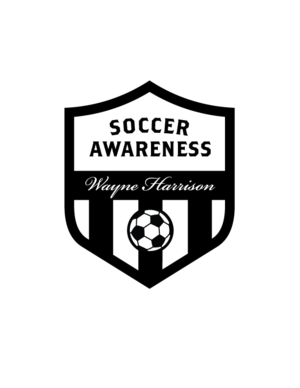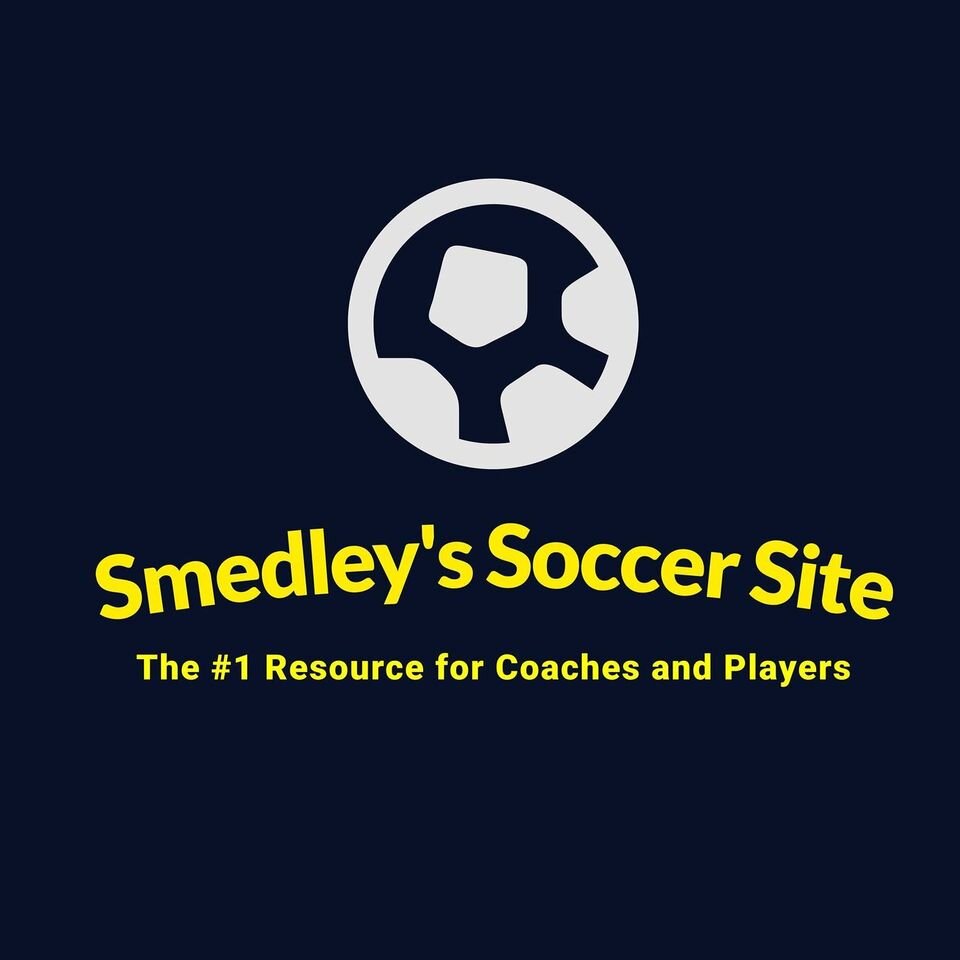How Do You Define Soccer Intelligence?
/I call it Soccer Awareness
1. This is the “thinking” part of the game. The game starts in the head of the player and we as coaches must guide the players to think more quickly and with better accuracy in decision making.
Therefore soccer intelligence is based around players being able to identify their options BEFORE they receive the ball; and pick out the best option of hopefully several available to advance it; and maintain possession of it in the next phase of play.
2. Another VITAL part of developing soccer intelligence in a player is the “Coaching Methodology” a coach uses.
You will never know how much a player understands until you ask them.
How often does your coach ask the players questions in training, how often do they ask the players to “decide themselves” where would be a better position to stand, what would be a better pass to make, where would it be best to dribble, where would it be best to play one touch; and then have the player SHOW the coach through their own movement and decision making?
How many times do you see a coach tell the player to do this, do that, go here; go there?
The player does it but doesn’t necessarily understand it; they did it because the coach told them to.
So with this current and prevalent style of coaching how does the player learn soccer intelligence for themselves when they are being told what to do all the time and not allowed to think for themselves? EXACTLY, they DON’T.
So from this my directive would be from the earliest age possible the coach should engage the players in conversation about the game, get their opinion, the coach doesn’t ram their opinion down the players throats, after a minute are the players listening anyway?
Half time team talk, have the players run it, yes even at U8. Ask them questions don’t tell them everything that happened unless they clearly do not understand for themselves and need the help.
In time you will see they are thinking for themselves; identifying situations that happened in the first half that they did well, that can improve on.
Of course the coach must offer advice also, but mix it up so everyone has a chance to add constructive information.
From this you would find the players begin to talk more on the field of play which is a serious problem in youth soccer in the USA where players play and hardly say anything.
They should ALL be communicating on the field which means less need for the coach to offer direction, and therefore offer direction sparingly when they really need it.
So start this process as early as possible.
I recently watched a team practice and hardly heard a player speak on the field. They wait until the coach tells them what to do, this is wrong but has developed because they have not been taught / guided correctly to think for themselves; from U8 and onwards and allowed / encouraged to develop their “own” soccer intelligence.
We can fix this at U8 and every year beyond if the coaching methodology of “question and answer” and “guided discovery” is used as opposed to the traditional “COMMAND” style that is out of date; though can still be used when needed; but sparingly rather than as the norm.
Why is it Important?
Without soccer intelligence a player cannot assess situations quickly enough through thinking and movement and therefore cannot maintain possession of the ball especially in pressure situations that occur every second on the field of play.
How Does Soccer Intelligence give players and teams a winning advantage?
Players assessing the game more quickly cerebrally than then opponents can play faster and think faster and make better decisions through identifying the best options as early as possible than opponents; and hence be one step ahead of them.
In player development is soccer intelligence the most important? Where does it fit in with tactical and technical development?
I would say it is the key to being a great soccer player. It is the SKILL FACTOR in player development, the when, where, how and why of technical development in terms of decision making. I will explain more and in greater detail below.
At what age should soccer intelligence training start?
It depends on the player. Some can start at 7 years old some might not be able to grasp it until 10 years old. Generally speaking the earlier the better; introducing very simple decision making training at 7 or 8 years.
Development of technique with closed skill training is the most important at these ages, repetition of the same things without too much thought; so they are capable of making successful dribbles and turns and passes without pressure and then introducing decision making to see if the players know where, where, how and why to make that pass, that dribble that turn and so on with pressure included.
How young is too young and why?
As I said it depends on the player.
How do you train soccer intelligence?
By systematically training the players with an awareness training model.
For example creating situations in training where the player MUST look around before they receive the ball, and so setting “conditions of training” to ensure this happens.
Simply put it goes like this and in this order:
- Observe where the ball is coming from
- Observe how it is coming? In the air; on the ground; and position accordingly
- Know where “teammates” are before receiving the ball
- Know where “opponents” are before receiving the ball
- Know where the “space” is to play into before receiving the ball
- Decide what to do with the ball before the ball arrives (one touch pass, two touch, dribble, run with it etc)
- Observe “where” the ball is to be moved to (where is the free space for example)
- Decide “when” the ball has to be moved (quickly due to pressure or keep it as you have time)
- Decide how the ball needs to be moved (one touch pass, two touch, dribble, run with it etc)
- Decide why that is the best option (compare all options with the teams tactical objectives in mind and pick the best one)
All this must be processed in the players mind BEFORE they get the ball.
I have created a “Continuums of Development Model” to identify what a player needs to do to develop soccer intelligence / awareness and it identifies all the component parts needed for a player to receive the ball and be successful in maintaining possession of it.
Therefore based on this above the Continuum looks like this:
All below done and worked out before receiving the ball:
- Look / Observe: what are my options?
- Body position: Open stance
- Feet preparation: not flat footed; but fleet of foot
- Communication: with your own eyes, vocally or from teammates
All done below after receiving the ball:
- Technique: the first touch; could be a controlling touch so 2 touches or more; or a one touch execution
- Skill: the when, where; how and why of the technique; the decision making process
- Mobility: Movement off the ball by the player and preparing for the next phase of play
- Transition: we lose possession we immediately tune into a defending mentality from an attacking mentality
To add, many players have the first part (the most important part), the look / observe assessment of options after e) and before f) when it should be at a) and be the first thing they do.
They don’t assess their options until they have received the ball and often this is too late and they lose possession.
Therefore the Look / Observe; if done before receiving the ball; actually may give them more “time” and offer three or four yards of space “in their head” or tell them they need to move it one touch because there is quick pressure on them.
How can parents help?
By learning more about the game, reading coaching books; by watching the top teams in the world on TV with their children, by going to live games with them when able. Even passing back and forth helping their kids develop their first touch or if they want throwing it to them as the first touch is a vital part of the players makeup.
I believe parent education of the game is vitally important to help them understand it more and they then can further understand even just the fundamentals of what we as the coaches / teachers are trying to develop with their children.
It might result in more questions for coaches to answer but coaches who know what they are doing will not or should not be afraid of that.
Is anyone really doing this today?
Good question, ask the coaches wherever your child plays to describe it; then you will know.
Please name a few professional players from clubs around the world who you think display soccer intelligence on the field today
Every professional player has soccer intelligence to a high level otherwise they could not play at the pace of the game today and be successful.
That said Paul Scholes of Manchester United has been the best in England, a great one touch player and interestingly enough whilst he hardly ever loses possession of the ball at the vast pace of the game today, he himself is not particularly quick of limb; but rather quick of MIND and has identified the game 3 moves ahead even before he gets the ball. He only needs half a touch he thinks so quickly J
Xavi; Buschets, Iniesta and Messi of Barcelona all completely different players who bring different qualities to soccer intelligence
Now there is another chapter for the future to explain all that!!
In essence, but not limited to: Buschets the set up player; one touch (especially good at awareness, possibly the best one touch player in the world), Xavi the link man, one and two touch, Iniesta the feeder player with quick passing and dribbling and Messi the finisher with EVERYTHING A PLAYER COULD EVER WISH FOR.











